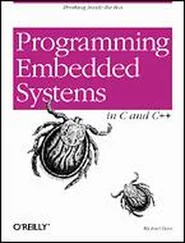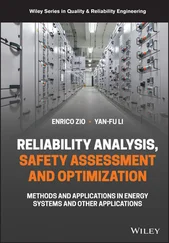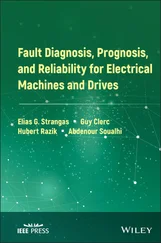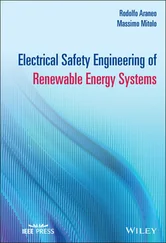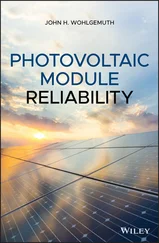1 Cover
2 Title Page
3 Copyright Page This edition first published 2020 by John Wiley & Sons, Inc., 111 River Street, Hoboken, NJ 07030, USA and Scrivener Publishing LLC, 100 Cummings Center, Suite 541J, Beverly, MA 01915, USA © 2020 Scrivener Publishing LLC For more information about Scrivener publications please visit www.scrivenerpublishing.com . All rights reserved. No part of this publication may be reproduced, stored in a retrieval system, or transmitted, in any form or by any means, electronic, mechanical, photocopying, recording, or otherwise, except as permitted by law. Advice on how to obtain permission to reuse material from this title is available at http://www.wiley.com/go/permissions . Wiley Global Headquarters 111 River Street, Hoboken, NJ 07030, USA For details of our global editorial offices, customer services, and more information about Wiley products visit us at www.wiley.com . Limit of Liability/Disclaimer of Warranty While the publisher and authors have used their best efforts in preparing this work, they make no representations or warranties with respect to the accuracy or completeness of the contents of this work and specifically disclaim all warranties, including without limitation any implied warranties of merchant-ability or fitness for a particular purpose. No warranty may be created or extended by sales representatives, written sales materials, or promotional statements for this work. The fact that an organization, website, or product is referred to in this work as a citation and/or potential source of further information does not mean that the publisher and authors endorse the information or services the organization, website, or product may provide or recommendations it may make. This work is sold with the understanding that the publisher is not engaged in rendering professional services. The advice and strategies contained herein may not be suitable for your situation. You should consult with a specialist where appropriate. Neither the publisher nor authors shall be liable for any loss of profit or any other commercial damages, including but not limited to special, incidental, consequential, or other damages. Further, readers should be aware that websites listed in this work may have changed or disappeared between when this work was written and when it is read. Library of Congress Cataloging-in-Publication Data ISBN 978-1-119-52627-8 Cover image: Stockvault.Com Cover design by Russell Richardson
4 Series Editor Preface
5 Preface
6 List of Tables
7 List of Figures
8 1 Introduction to Repairable Systems1.1 Introduction 1.2 Perfect, Minimal, and Imperfect Repairs 1.3 Summary References
9 2 Repairable Systems Reliability Analysis: Non-Parametric2.1 Introduction 2.2 Mean Cumulative Function 2.3 Construction of MCF Plot and Confidence Bounds: Exact Age Data 2.4 Case Study: ROV System 2.5 Interval Age Analysis 2.6 Summary and Conclusion Exercises References
10 3 Repairable Systems Reliability Analysis: Parametric3.1 Introduction 3.2 Basic Terminologies 3.3 Parametric Analysis Approaches Solved Examples Exercises References Further Reading ARI Models
11 4 Goodness-of-Fit Tests for Repairable Systems4.1 Introduction 4.2 Mann’s Test for the Weibull Distribution 4.3 Laplace Trend Test 4.4 GOF Models for Power Law Process 4.5 GOF Model for GRP Based on Kijima-I Model 4.6 Summary Exercises References
12 5 Maintenance Modeling in Repairable Systems5.1 Introduction to Maintenance Policies Using Kijima Virtual Age Model 5.2 Need for HFRC Threshold 5.3 Reliability-Based Methodology for Optimal Maintenance Policies in MA 5.4 Availability-Based HFRC Analysis 5.5 Summary Exercises References
13 6 FMEA for Repairable Systems Based on Repair Effectiveness Index6.1 Introduction 6.2 A Brief Overview on Performing FMEA 6.3 Estimating RPNs Through the Modified Approach [15] 6.4 Corrective Actions 6.5 Summary References
14 7 An Integrated Approach to Weapon Procurement Systems7.1 Introduction 7.2 Analytic Network Process Model 7.3 AP Index and AP Value Estimation 7.4 Formation of an ACU 7.5 Summary References
15 8 Throughput Analysis of the Overhaul Line of a Repair Depot8.1 Introduction 8.2 Basic Definitions, Parameters, and Relationships 8.3 Variability 8.4 Process Batching 8.5 System Flow and Parameters 8.6 System Analysis and Discussion 8.7 Summary References
16 Appendix AThe Saaty Rating Scale Pairwise Comparisons and Estimation of Weights for ANP
17 Appendix B Unweighted Super-Matrix (Part 1) Unweighted Super-Matrix (Part 2) Weighted Super-Matrix (Part 1) Weighted Super-Matrix (Part 2) Limit Super-Matrix (Part 1) Limit Super-Matrix (Part 2)
18 Appendix C Pairwise Comparisons and Estimation of Weights for AHP
19 Appendix DF Distribution Table
20 Appendix ENormal Distribution Table
21 Appendix FChi Square Table
22 Appendix GCritical Values for Cramér-von Mises Test
23 Index
24 Also of InterestCheck out these published and forthcoming titles in the Performability Engineering Series
25 End User License Agreement
1 Chapter 2Table 2.1 Rotating machine failure data of Example 2.2.Table 2.2 MCF and confidence calculations.Table 2.3 Example 2.3—Burn-in period determination.Table 2.4 Data for Example 2.4.Table 2.5 List of failure categories and counts for all 53 ROVs.Table 2.6 Failure Counts in Months Corresponding their Failure Modes.Table 2.7 MCF calculation by combining all failure modes.Table 2.8 MCF calculation for individual category at 24 months.Table 2.9 A sample of collected data.Table 2.10 Exercise 1: Failure data of three systems.
2 Chapter 3Table 3.1 Time to failure data (hours) of aero engines of Example 3.2.Table 3.2 Virtual age–based reliability metrics.Table 3.3 Time to failure data (hours) of Example 3.4.Table 3.4 Time to failure data (hours) of Example 3.5.Table 3.5 Time between failures for a compressor.
3 Chapter 4Table 4.1 Hypothesis tests.
4 Chapter 5Table 5.1 Maintenance modeling in repairable systems.Table 5.2 Relative outcome of the two overhaul cycles.Table 5.3 Relative outcome of the two overhaul cycles.Table 5.4 Comparative results of both overhaul cycles (Variant 1).Table 5.5 Comparative results of both overhaul cycles (Variant 2).Table 5.6 Results-failure mode wise for first overhaul cycle.Table 5.7 Results-failure mode wise for t 2OH.Table 5.8 Failure mode wise percent improvement.Table 5.9 Comparative results of both overhaul cycles for the aero engine.
5 Chapter 6Table 6.1 Extensions to standard FMEA.Table 6.2 Failure cause-mode effect relationship.Table 6.3 Severity rating.Table 6.4 Occurrence rating.Table 6.5 Failure mode wise initial RPN.Table 6.6 Failure mode wise values of final Q.Table 6.7 Final RPNs.Table 6.8 FM1.Table 6.9 FM2.Table 6.11 Comparative results.
6 Chapter 7Table 7.1 Brief literature review on WSCE using MCDM.Table 7.2 Weights for API.Table 7.3 Actual and scaled API values of each weapon category.Table 7.4 APV estimation of combat force “ALPHA”.Table 7.5 APV enhancement.Table 7.6 API ijvalues.Table 7.7 C ij(million USD), a i, d i, and m i.Table 7.8 A ijvalues.Table 7.9 Optimal x ijvalues.
7 Chapter 8Table 8.1 Brief literature review on TH analysis.Table 8.2 Required TH of the three components.Table 8.3 Process requirements of LPCR blades repair.Table 8.4 Process requirements of CCOC repair.Table 8.5 Process requirements of LPTR blades repair.Table 8.6 Component 1—LPCR blades.Table 8.7 Component 2—CCOC.Table 8.8 Component 3—LPTR blades.
8 Appendix ATable A1 Pairwise comparison in cluster APWC WRT MF.Table A2 Pairwise comparison in cluster APWC WRT FI.Table A3 Pairwise comparison in cluster APWC WRT GN.Table A4 Pairwise comparison in cluster APWC WRT AB.
Читать дальше


